Body entrance
Puncture or
catheterization for single flushing
Perfusion therapy for metastatic tumor of
ovarian cancer
Based on the principle of tumor hyperthermia, using the external electromagnetic induction heating device of hyperthermic perfusion chemotherapy system, the treatment solution is continuously heated to the treatment temperature, introduced into the patient's body cavity through the power circulation pump, and the effective treatment temperature is maintained within 60 minutes to give full play to the thermal killing mechanism.Process thermal cleaning of metastatic cancer cells widely cultivated in serous, and add chemotherapy drugs with heat sensitization effect according to the characteristics such as metabolic block of cancer cells and damage of genetic material after HIPEC, to force cancer cells to stop dividing, eliminate lesions that causes malignant effusion , make rapid repair of the biofilm, and achieve the goal of effective treatments for cancer effusion.
Start
Establishing a
channel for
B-ultrasound
positioning
End of treatment
Clean drainage (surgery)
Retain an appropriate amount of residual fluid in the body
cavity (internal medicine)
End of treatment
Treatment of gastric cancer, lung cancer, colorectal cancer,
intraoperative and postoperative prevention and
treatment of implant metastasis
Perfusion therapy for cancer cells, metastatic nodules, and residual lesions that cannot be removed by surgery
Perfusion therapy for malignant body cavity effusion (chest, abdominal cavity)
Treatment of malignant thoracoperitoneal mesothelioma
Patients with severe chest and abdominal adhesions
Intestinal obstruction, cirrhosis ascites
ECOG>2, severe physical decline, and inability to tolerate hot infusion therapy
Patients with bleeding tendencies
Patients with inguinal hernia and inguinal hernia
Patients with poor compliance
Body exit
Puncture or catheterization — After replacing the accumulated liquid, enter the circulation mode
and preset the temperature — The entry
temperature reaches the treatment temperature, and chemotherapy drugs are added to maintain a
constant temperature — circulate perfusion for 60 minutes
Obvious
curative effect
No damage to physiological function and no adverse sequelae
Reduce the toxic and side effects of chemotherapy drugs in body
cavity
Lung adenocarcinoma hydrothorax:After one time pleural hyperthermic perfusion,hydrothorax can only be detected to scatter in masses of cancer cells.Most of the cancer cells have been degraded by apoptosis.
Pathological Picture
Tumor tissue biopsy:a cluster of cancer cells with variable size and morphology and darker staining before treatment.After thermal perfusion,the cancer cells disappeared.
1
Short treatment course
3 times of average treatment and 10 days
of average hospitalization
The control effective rate of cancerous effusion is significantly improved
2
Stable long-term effect
New means
The remission period is prolonged,the quality of life is significantly improved,and the recurrence rate is reduced
3
—— Clinical application of thermostatic circulatory hyperthermia perfusion chemotherapy in the prevention and treatment of body cavity metastatic cancer
4
Toxic side
effects
5
6
Good method for prevention and treatment of cancerous implantation metastasis and prevention of malignant peritoneal effusion
Clinical indications
▼
Contraindication
▼
Clinical Indications
A. Treatment of gastric cancer, lung cancer, colorectal cancer, intraoperative and postoperative prevention and treatment of implant metastasis
B. Perfusion therapy for cancer cells, metastatic nodules, and residual lesions that cannot be removed by surgery
C. Perfusion therapy for malignant body cavity effusion (chest, abdominal cavity)
D. Perfusion therapy for metastatic tumor of ovarian cancer
E. Treatment of malignant thoracoperitoneal mesothelioma
Treatment Principle
Changes of hydrocele before and after one-time intracavitary
circulatory thermal perfusion
▼
Graphical Description
Ideal Practical Value Six Advantages
Sequela
Yellow
Bloody
Chylous
Jelly like
Excreted fibrous tissue
Excreted neoplasm nodules
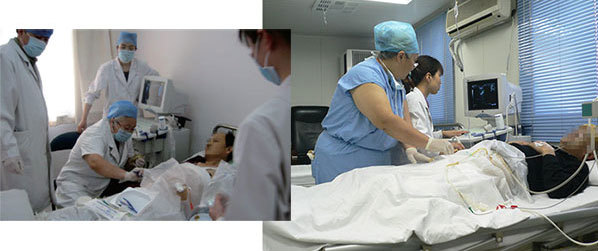
|
Changes of hydrocele before and after one-time intracavitary circulatory thermal perfusion
|
||
 |
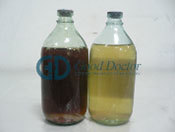 |
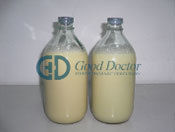 |
|
|
|
|
|
Yellow
|
Bloody
|
Chylous
|
|
|
|
|
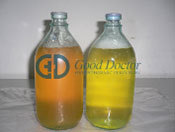 |
 |
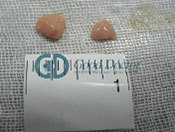 |
|
Jelly like
|
Excreted fibrous tissue
|
Excreted neoplasm nodules
|
Graphical Description
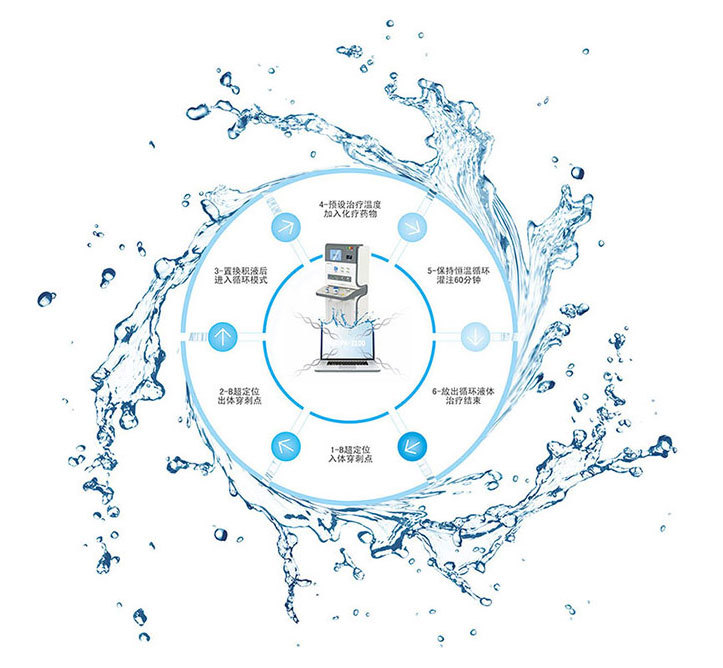
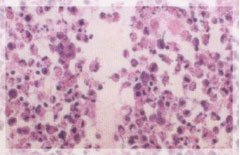 |
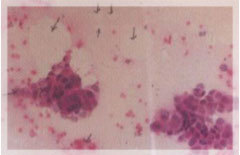 |
|
Lung adenocarcinoma hydrothorax:After one time pleural hyperthermic perfusion,hydrothorax can only be detected to scatter in masses of cancer cells.Most of the cancer cells have been degraded by apoptosis.
|
|
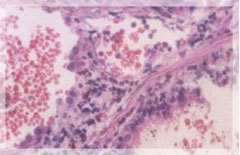 |
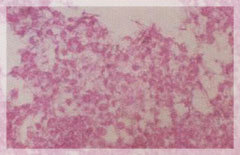 |
|
Tumor tissue biopsy:a cluster of cancer cells with variable size and morphology and darker staining before treatment.After thermal perfusion,the cancer cells disappeared.
|
|


